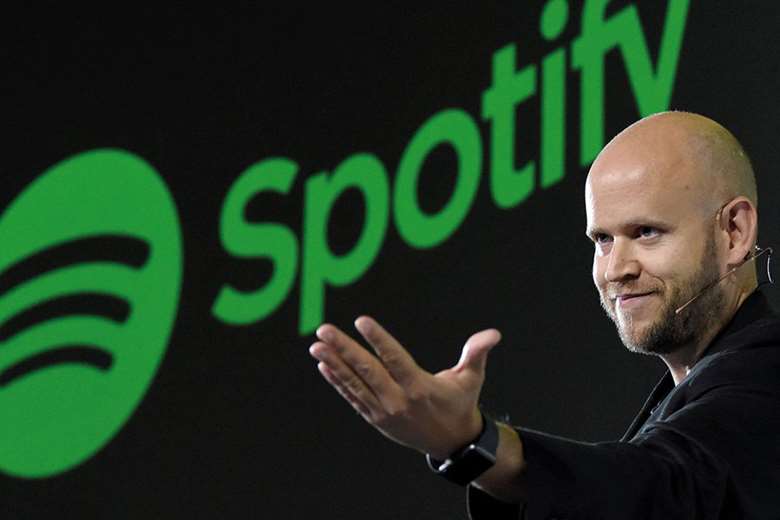Spotify's big problem
Stuart Nicholson
Thursday, February 20, 2025
Musicians have been increasingly dancing to Spotify’s tune, with major labels focusing on streaming numbers (and followers) as the ultimate measure of success. Yet, as Stuart Nicholson explains, the platform has been gaming the rules and faking some of its most streamed artists…

What is Daniel Ek up to now? Since February 2024 he divested himself of almost $500,000,000 worth of his shares in his own company Spotify. Yes, you read that right, half a billion dollars of his own shares, in tranches of around $35m to $50m (plus one of $118m) throughout last year. But Spotify has been dancing in and out of the financial spotlight for some while now. It took 13 years and 96 million paid subscribers for the market leader in music streaming to finally make a profit, and that was in February 2019. Even then it was something of an uphill struggle since Spotify pays a licensing fee every time a user streams a song, unlike movie streaming services such as Netflix, who pay a once-and-for-all fee for content that can be streamed ad infinitum at no extra cost. This is a real problem for Spotify and other music streaming services, since it means its content costs rise in direct proportion to its user growth.
Despite generating billions of dollars in revenue, streaming services have to give most of that money back to the record companies in royalties. This in turn creates a need to negotiate lower licensing costs to achieve the higher net growth needed to enhance shareholder value. However, record companies know they are in the driving seat, arguing the costs involved in providing successful chart content are high. Even when the streaming services are successful in lowering licensing costs, it is still not enough. For example, in 2017 Spotify paid about 79 cents of every dollar it made back to rights holders (principally the big three record companies), down from 88 cents in 2015. Yet that was still well above Netflix, which paid just 66 cents on every dollar of revenue that year.
The bottom line means that Spotify’s continued growth is dependent on improving its margins still further, with some arguing it is an almost impossible circle to square, such as Fortune magazine which believes, “streaming services face a fundamental business problem they can’t overcome.” Just how hard it is to overcome became apparent when Spotify made its IPO filing (sometimes DPO) – an Initial or Direct Public Offering when a private company sells shares of its stock to the public on the stock exchange to institutional investors and the public.
In April 2018, when Spotify shares became available on the New York Stock Exchange it became clear just how hard it was to make money streaming – Spotify’s losses for the preceding year had been some $1.5bn. They were not alone – rival streamer Pandora posted a loss of $518.4m for the same period. But 2017 was not an exceptional year. Up to that point Spotify had never made a profit. One way to go would be to increase its ad revenue, but even that was struggling – in Q2 2019, for example, its quarterly ad revenues were $186m, just 9.9 percent of its overall revenue. On the face of it, profitability, never mind increased profitability, was proving nearly impossible. No wonder some have likened streaming services to an elaborate Ponzi scheme struggling to enhance shareholder value.
But then Spotify came up with a cunning wheeze. As Liz Pelley reveals in her forthcoming book Mood Machine: The Rise of Spotify and the Costs of the Perfect Playlist, Spotify hires session musicians for a flat fee, no royalties, to produce music to fit their jazz, ambient, classical and electronic playlists, and a team of employees to grow the total number of streams for this 'in house' generated music. Spotify doesn’t have to pay record company royalties since they are the owners of the 'content'. [Spotify already doesn't pay out royalties on any tracks that are streamed fewer than 1,000 times in a given year – Ed]
Inevitably this poses troubling implications for the future of music and the remuneration for artists. Given the steaming services’ hold on the distribution and consumption of music – and that around 98 per cent of their total streams are chart-related – many believe AI is already in use and the time could come when the record charts are full of AI generated hits performed by AI generated artists and less popular genres, like jazz, that only contribute to one or two per cent of total streams, are kicked into touch. Back in 2017, Spotify hired Francois Pachet, a French AI expert, and many concluded – even then – it might be the first step towards in-house generated AI music.
Perhaps inevitably, then, there are those who see troubling implications in the way that the distribution of virtually the entire history of recorded music is now in the hands of just a few players struggling for profitability.
Liz Pelly's Mood Machine will be available as an e-book and in hardback on 13 March, from all booksellers.